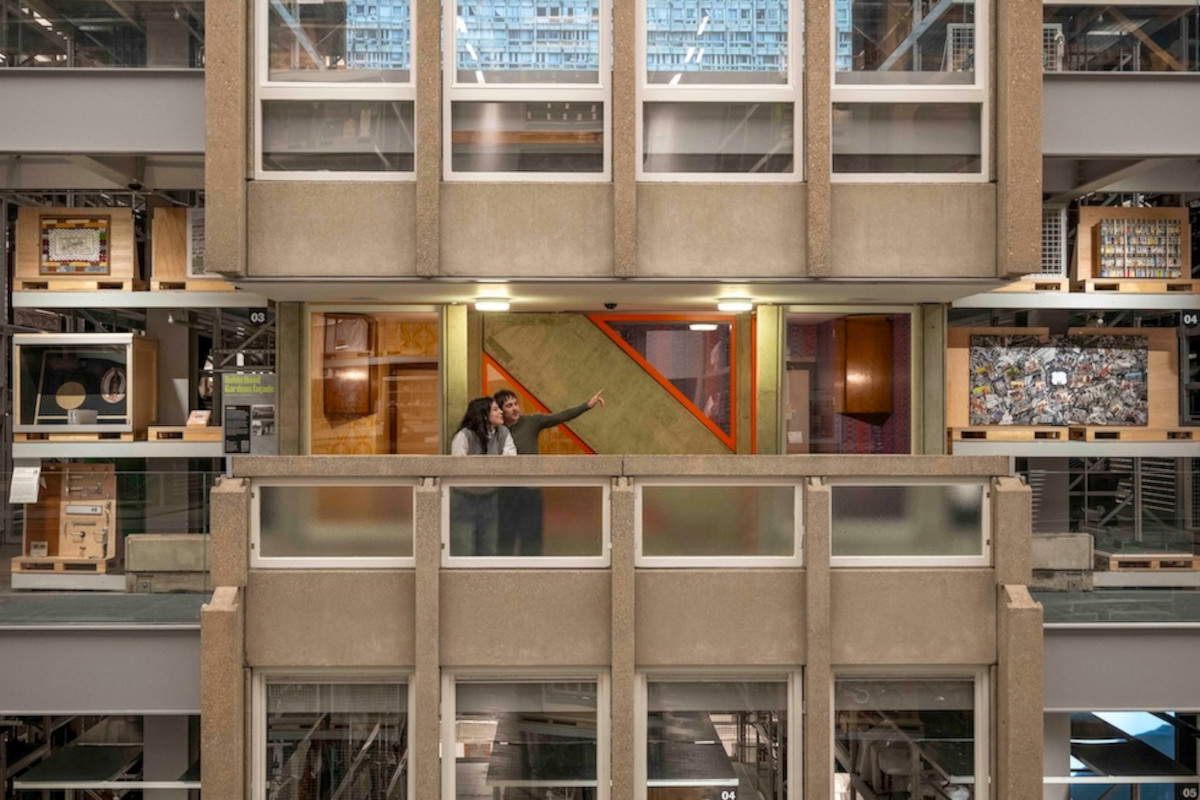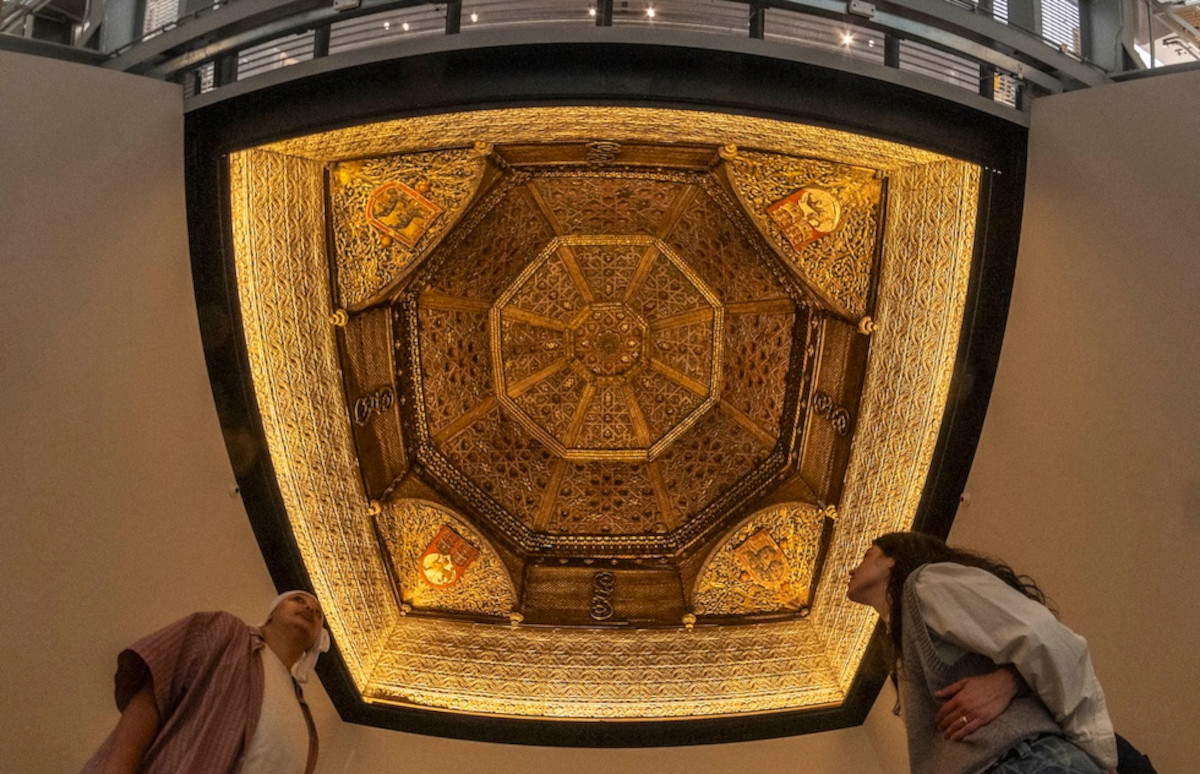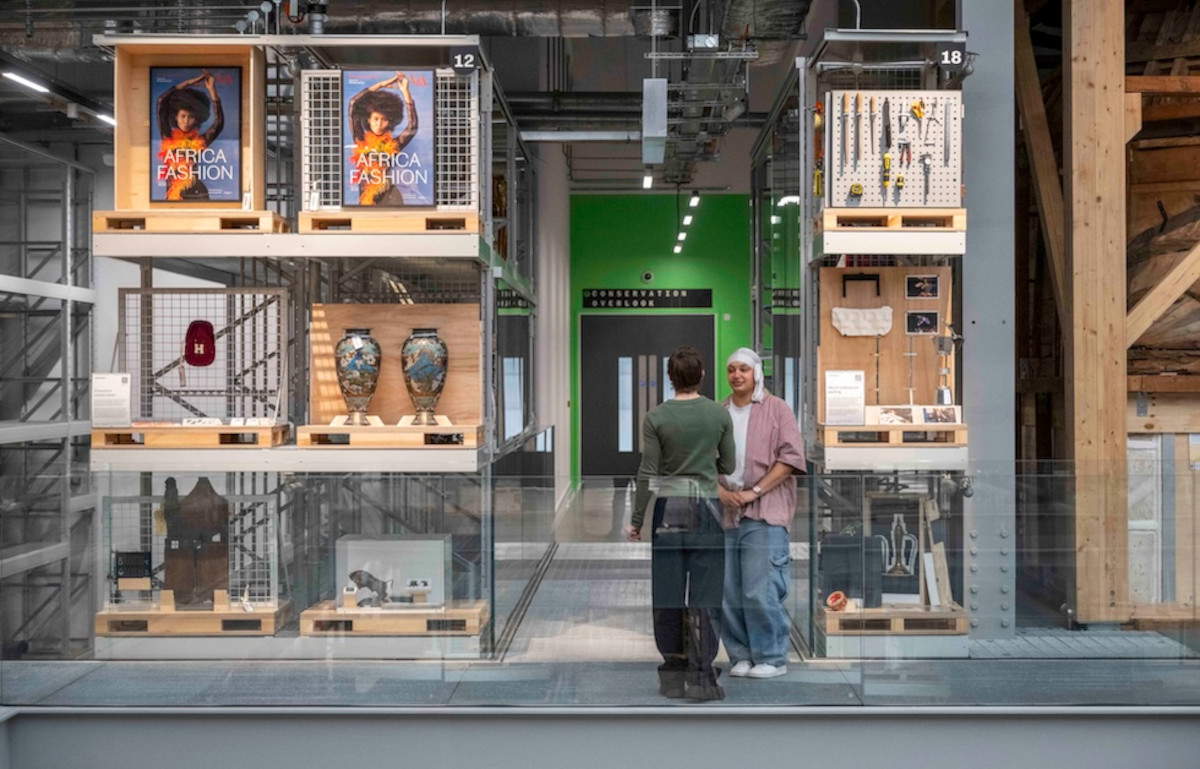An exhibition space that challenges traditional models of museum enjoyment has opened in London. It is called the V&A East Storehouse(video presentation here) and is, technically, a warehouse although, the architecture, layout and principle governing its operation place it somewhere between warehouse, museum and laboratory. The new facility, which opened on May 31, is part of the Victoria and Albert Museum, one of the UK’s most important institutions in the field of decorative and applied arts. Hundreds of thousands of works that would normally remain in the warehouses of the main museum in South Kensington are stored and exhibited here free of charge.
The stated goal is to open to the public that portion of the permanent collection that, for logistical or curatorial reasons, cannot find space in traditional exhibition halls. According to Tim Reeve, deputy director and chief operating officer of the V&A, about 95 percent of the museum’s holdings are not regularly displayed. The V&A East Storehouse was created with the intention of reversing this trend, offering researchers, students and ordinary visitors the opportunity to explore the entire material universe of one of the world’s greatest museums. The storehouse is housed within a 16,000-square-foot building, carved out of one of the structures built for international media during the 2012 London Olympic Games. It is located in the eastern part of the British capital, an area undergoing continuous urban regeneration. The architectural design was entrusted to the New York firm Diller Scofidio + Renfro, already the creator of innovative museum interventions such as The Shed in New York and the expansion of the Museum of Modern Art.

The space was designed to be both functional and accessible. The main entrance leads to a grand staircase that leads directly into the central exhibition space. Here, the three levels of the depot are arranged in concentric rings. The innermost one is fully accessible to the public, while the outer one is reserved for staff. Nonetheless, the entire complex is designed to promote transparency: on the upper floor are the rooms dedicated to the study and maintenance of the works, but thanks to large windows it is possible to observe the activities of the craftsmen and restorers in real time. The collections are organized to maintain a certain functional order, but the visual effect is more reminiscent of an industrial warehouse than a canonical museum. Classic works of art and everyday objects are arranged on shelves, metal grids, and wooden pallets. Ancient busts, street signs, paintings, electric guitars and chandeliers can be seen. Visitors move through an environment in which the historical or aesthetic value of objects is not placed on a pedestal, but integrated into an operational context. Standing out among the permanent works are a few pieces of particular note: an enormous canvas painted by Pablo Picasso for a set of the Russian Ballets in 1924, measuring 10 by 11 meters; two floors of the facade of Robin Hood Gardens, a Brutalist housing complex built in 1972 and recently demolished; and a faithful reconstruction of the office designed in the 1930s by Frank Lloyd Wright for a Pittsburgh contractor. Other impressive installations include part of a colonnade from northern India, weighing 18 tons, and a reproduction of the ceiling of a 15th-century Spanish palace.
Overall, the repository holds 250,000 objects, 350,000 books and about a thousand archives. Access is free and the intention is to attract a wider audience, including young people, who are often perceived as more distant from museum settings. Reeve pointed out that many visitors feel intimidated by museum facilities that can appear cold and inaccessible. For this reason, the space has been designed to be more immediate and welcoming, designed not only as a place for study but also for entertainment. The V&A East Storehouse fits into a museum trend that aims for transparency and inclusiveness. A similar example is the Depot Boijmans Van Beuningen, opening in Rotterdam in 2021. Smaller than the new London depot, it houses about 150,000 works including works by Rembrandt, Van Gogh, and Bosch. Both facilities respond to growing criticism of large museums for being too opaque in the selection of works on display and, in some cases, unclear in the provenance of collections. Indeed, the issue of the restitution of stolen or misappropriated goods in colonial times has become central to contemporary museological debate.



According to Elizabeth Diller, co-founder of the architectural firm in charge of the project, the V&A East Storehouse is “neither a storehouse nor a museum, but rather a hybrid.” She called it a kind of contemporary “huge chamber of wonders,” in which the layering of works and eras creates a heterogeneous and nonlinear visitor experience.
The depot is the first of two major projects planned by the Victoria and Albert Museum in East London. The second, the V&A East Museum, will open to the public in spring 2026 and will have functions closer to those of a traditional museum. Both are part of the expansion master plan sought by the institution to extend its influence outside the city’s central districts. Although the total cost of the operation has not been officially disclosed, Reeve confirmed that the UK Department for Culture, Media and Sport has funded the operation with 50 million pounds, or about 59 million euros. The V&A East Storehouse will also in the future house part of David Bowie’s collection, recently acquired by the museum. It is a move that will further help enrich the variety of works on display and attract new segments of the public. In the meantime, the Storehouse remains open as a space for observation, study and discussion, accessible to all, at a time in history when cultural accessibility is increasingly central to public policy and museum projects.
 |
| V&A East Storehouse opens in London, a museum-depot displaying more than half a million works |
Warning: the translation into English of the original Italian article was created using automatic tools. We undertake to review all articles, but we do not guarantee the total absence of inaccuracies in the translation due to the program. You can find the original by clicking on the ITA button. If you find any mistake,please contact us.